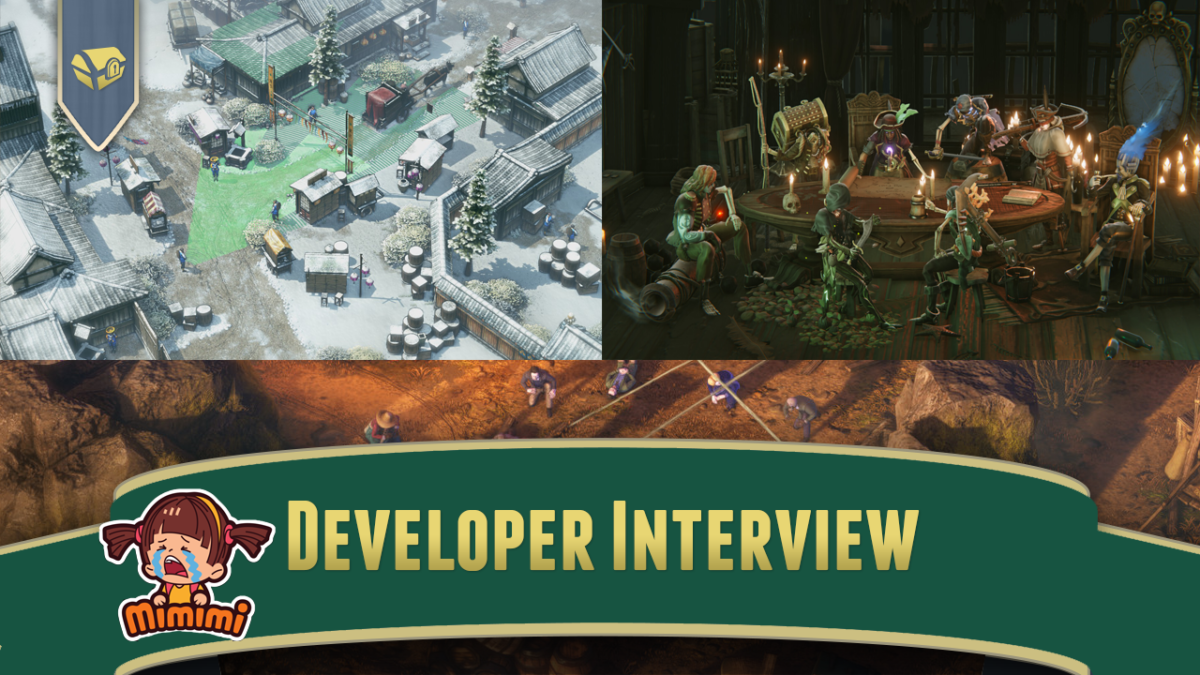For this perceptive podcast, I spoke with game designer Moritz Wagner from Mimimi Games to talk about the studio’s history, stealth design, and their upcoming game Shadow Gambit: The Cursed Crew. We spoke about how the studio pivoted towards stealth/strategy with Shadow Tactics, and a whole lot on the ins and outs of stealth design. From there, we talked about Shadow Gambit and how the studio is trying to make a more accessible stealth experience, while still providing the challenge for their fans.
Pikmin 2 Treasure Changes For Switch
Remember when Pikmin 2 came out on Gamecube? It marked a considerable departure from the first game’s structure. Pikmin had a hard time limit, and it was rather a rush to complete the game within its 30 days on your first try. Pikmin 2 dispensed with that, giving players as many days as they wanted. It also had “dungeon” areas, semi-random underground mazes where even the day timer was paused. A considerable portion of the game was in those underground areas.
One of the less-remembered things about Pikmin 2 was that it had actual product placement in it. Many of the treasures you found were outright commercial objects, modeled and textured in the game, some with vaguely promotional names, like “Courage Reactor” for Duracell Battery, or “Quenching Emblem” for a 7-Up bottle cap. Even the European and Japanese versions had these, although they reflected products from their territories instead.
Presumably because the licensing deals for these objects have expired, the Switch 2 version of Pikmin 2 uses different, more generic items in place of the trademarked originals. The replacements are an interesting lot. Where they could have just removed the old textures and replaced them with solid colors, they put in fake ingredients lists (too small to read), “Established 1920” notices, fake slogans and logos, notices of product quantity in Imperial units with metric equivalent, and more. You’d almost believe Olimar was finding real goods from Earth, ones that you just haven’t heard of. The tip-off is, the names of the replacement products are just slightly too generic. “Coconut Water” and “Night Lip Balm” are descriptive but generic, and so but really able to be trademarked. They’re a nice batch of fake brands though. For “Pineapple Fresh Slices,” they even made up a realistic-looking US-style Nutrition Facts label!
The differences have been recorded in a video by ModenXP on Youtube, embedded below:
And now, as an exercise in overkill, here’s a list of all the old and new versions, and interesting things about the replacements:
| Courage Reactor (280 poko) | Duracell D-Cell battery | “Electric Power Super Battery,” a fake brand that replaces the multiple Duracell items among the treasures. It’s also a D cell. There’s a warning box that’s too small for me to read. |
| Quenching Emblem (100 poko) | 7-Up bottle cap | Bottle cap for “Spicy Ginger Ale, Premium Quality.” There’s some other text along the outer edge that’s just on the other side of the readability afforded by the texture compression. |
| Alien Billboard (80 poko) | Kiwi Shoe Polish, 1 1/8 ounce (31 gram) size | “Shoe Polish, highquality shoe care.” “Established 1920.” The size is 32 grams, “1,128 OZ” in the British style, using a comma as the decimal separator instead of a period. The slogan “Shine & Protect” runs along the outer edge of the lid. |
| Drought Ender (100 poko) | Old-style Dr. Pepper bottle cap | A bottle cap for “Coconut Water,” evidently a product someone would want to buy. The rim assures us, twice, that it is in fact “100% Pure Coconut Water.” Promise or threat, you decide. |
| Survival Ointment (90 poko) | A tube of ChapStick lip balm | “Night Lip Balm,” with “Extra Moisture.” Lots of tiny unreadable text on this one. |
| Gerkin Gate/Flavor Gate (100 poko) | A lid to a jar of Vlasic pickles | The only item with a different title. This is “Orange Jam,” “Made With Real Fruit,” “Organic Homemade Product.” 13.4 oz (380 grams). Shouldn’t they have just called it marmalade? |
| Creative Inspiration (100 poko) | Old-style bottle cap for RC Cola, eternal third-place in the cola wars | “Delicious! Black Berry Soda.” One of the more generic logos. |
| Patience Tester (130 poko) | A can of Sun Luck water chestnuts. How many company ad departments would let a licensor get away with implying their product tests one’s patience? | “Pineapple, Fresh Slices.” “In heavy syrup.” Oh, joy. (I don’t like pineapple, and pineapple syrup is not something I would ever care to try.) It’s interesting that they changed even the type of product here, although it’s the same sized can. |
| Healing Cask (60 poko) | A jar of Carmex salve, “FOR-COLD-SORES.” Even though the lid looks like it’s from the 50s, I think this is how the product looks even today. | “Organic” Aloe Vera Cream. Nice stylized rendering of a plant on the cover, but otherwise pretty ordinary. |
| Salivatrix (30 poko) | A lid for Dannon “Fruit on the Bottom.” Fruit on the bottom of what? It doesn’t say! It does tell us it has “Same Great Taste!”, but again, the same great taste of what? The mysteries belie this treasure’s paltry value. Bee the why, “Salivatrix” sounds like an enabler of a particularly niche kink. | “Morning Fruit Yogurt.” Aaah that’s right, Dannon makes yogurt! Did they remake Pikmin 2 just so they could fix their omission? Blueberry, and Low Fat, Net Wt. 15 oz (425.25g). Thanks for the two decimal places of metric accuracy, fake yogurt lid. |
| Thirst Activator (300 poko) | Cap to a bottle of Tree Top juice. What variety is left unspecified. One of the little jokes of the game is how far off the retail value the Salvage Pod’s valuation of your treasures is. 300 poko is pretty valuable! | “FRESH Organic Fruit Sauce.” The name is still Thirst Activator though. Brings to mind gulping down a nice hearty jar of Ragu’s finest, mm-mmm. Both versions of the treasure have arrows telling a consumer which way to open the jar. |
| Massive Lid (100 poko) | Old-style cap to a bottle of Yoo-Hoo Cola. Cola? The internet is mum as to the history of this mysterious product. I don’t want to imagine what it was like. | The cap now reads “Mountain Water.” It’s a metal bottlecap, as if to a glass bottle. At least it’s recyclable. The title is odd; it’s a small cap, there’s plenty of bigger lids in the treasure hoard. |
| Happiness Emblem (100 poko) | Another old-style bottlecap, this to a can of Squirt grapefruit soda. Squirt, a Dr. Pepper brand, is still made and sold even today. | Ginger Ale LIGHT. Has an ingredients list right on the cap, just like the Squirt cap had. The ingredients are even readable: carbonated Water, high-fructose corn syrup, ginger extract. Hey, I’d drink it. Nintendo’s localizers know their territory. |
| Durable Energy Cell (160 poko) | Duracell C-Cell battery. | Electric Power Super Battery, again, Duracell’s counterpart in the Pikmin ludomatic universe. |
| Endless Repository (130 poko) | A can of Beach Cliff Sardines, “Proudly made in the USA” and “in soybean oil.” | “Sardines, Skinless & Boneless.” “In olive oil & lemon.” The “pull ring easy-open” and fake UPC code are nice touches. This is one of my favorite fake products, even though I’ve never eaten a canned fish in anger. |
| Pondering Emblem (100 poko) | Cap to a bottle of Yoo-Hoo Chocolate Flavored Beverage. The pondering part of it is wondering what the hell Yoo-Hoo is made of. | “Milk Crown” Cream Soda. Nice stylized representation of a splash of milk. The cap tells us “artificial flavor & color.” Remember to demand natural flavoring and coloring from your fictional video-game beverages! |
| Abstract Masterpiece (30 poko) | A Snapple Cap. You can’t flip it over to see if there’s a Snapple Fact on the bottom. | Sunny Tropical Juice. “What kind of juice?” “Tropical.” At least the label tells us it’s made from the best natural fruit. No synthetic fruit here, oh no no. |
| Optical Illustration (140 poko) | Lid to a jar of Ragu tomato-based sauce. I joked about it, and lo, it has come into being. There is very little optical here, and it hardly qualifies as an illustration | “Tomato Basil” homemade pasta sauce. One of the faker-looking treasures. |
| Activity Arouser (100 poko) | The “W”-logo from the lid of a can of Wilson tennis balls. | One of the few overtly fake brands, with a logo of a flaming tennis ball and the cryptic word “TARAI” in a sci-fi font. No other information is supplied. This mystery is going to haunt me. |
| Proton AA (90 poko) | Duracell AA-Cell battery. | The third of the Electric Power Super Battery collection. It looks a whole lot like one of those battery brands you can find at a dollar store, that last roughly 23 seconds when put to use. |
| Drone Supplies (130 poko) | Underwood Deviled Ham Spread. A really distinctive package, round but wrapped in paper with a unique fold at the top. | Tuna Salad Spread. The kept the paper wrapping. This is the one with the realistic Nutrition Facts label on the back. |
| Fuel Reservoir (120 poko) | Duracell 9-Volt battery. | Last of the Electric Power Super Battery set. |
| Fruit Guard (130 poko) | A can (not just the lid!) of Tree Top apple juice. The words “Apple Juice” are not written in Comic-Sans, but it does look a lot like they are. | FRESH Organic 100% apple juice. FRESH seems to be the replacement brand for Tree Top. At least it’s not drinkable fruit sauce this time. Also has a Nutritional Facts label on the back (as does the original). |
| Nutrient Silo (130 poko) | Skippy creamy peanut butter. | Ribbon’s peanut butter. They made a cute little logo involving a pair of cartoon peanuts for it! I demand fan art of them immediately, get to work! Also has a Nutrition Facts box and fake barcode. |
| Yellow Taste Tyrant (100 poko) | The yellow, unpainted plastic lid of a wide-mouthed container of French’s mustard. The French’s logo is molded into the surface, and seems to react to light, which is interesting. | A green painted illustration of a hot dog with the words “Hot Mustard” twice. The modeled French’s logo is gone. |
| Stringent Container (130 poko) | A canister of Clabber Girl baking powder. | The canister is of “Baking Powder,” “Queen’s Quality,” “Double Acting” and “Gluten Free.” Established 1932! Like the original, has both nutrition facts and a recipe, here for a chocolate muffin. You can just make out that a “serving” of this can of baking powder has 55 calories. At the bottom of the nutrition facts it says “European Leading Brand.” |
| Hypnotic Platter (100 poko) | Bottle cap for A&W (presumably) Root Beer. Caffeine free. | “19TH Anniversary” premium orange juice. Apparently sold in soda-style glass bottles? |
27 Treausres that Changed in Pikmin 2 on Switch (Youtube, 14 minutes)
4th of July Extra: Cabel Sasser’s Firework Package Posts
I wracked my brain trying to come up with something fun to post for the annual United States Pet Frightening Day. I came up with this. I’m tagging this sundrysunday, even though it’s Tuesday, because that’s my tag for all the borderline relevant posts.
This one is even more on-the-border (nooooow) than usual, right exactly on the edge between Premisestan and Irrelevania. The game-relevant part of it is, Cabel Sasser (Mastodon) is a long-time internet person who 16 years ago made for Youtube Buggy Saint’s Row: The Musical (we’ve linked it before), and more recently helped publish Untitled Goose Game and produce the Playdate (which we’ve written about before, even though I still don’t have one argh).

But this post has nothing to do with any of those things! On Cabel’s blog (and a couple of other sites-one year it was Flickr), for ten years, he made annual posts where he presented firework packaging found in local shops, until his city passed a fireworks ban in 2016.

We’re truly all the poorer for that, and more than once I’ve asked him, on Twitter, if he might someday continue the tradition. (Future readers: Twitter is a microblogging service that used to exist.) He’s never replied, which is how most people on the internet react to me, but I’m happy that he probably knows they were appreciated.
Here are links to each post he made, and every one of them is terrific fun:
2007 – 2008 – 2009 –2010 – 2011 – 2012 – 2013 – 2014 – 2015 – 2016
Here are just a very few highlight images to whet the appetite. Warning: Shoots Flaming Balls!













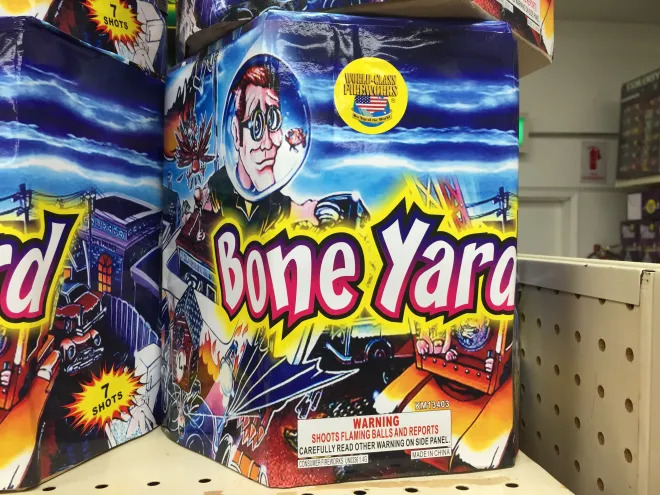








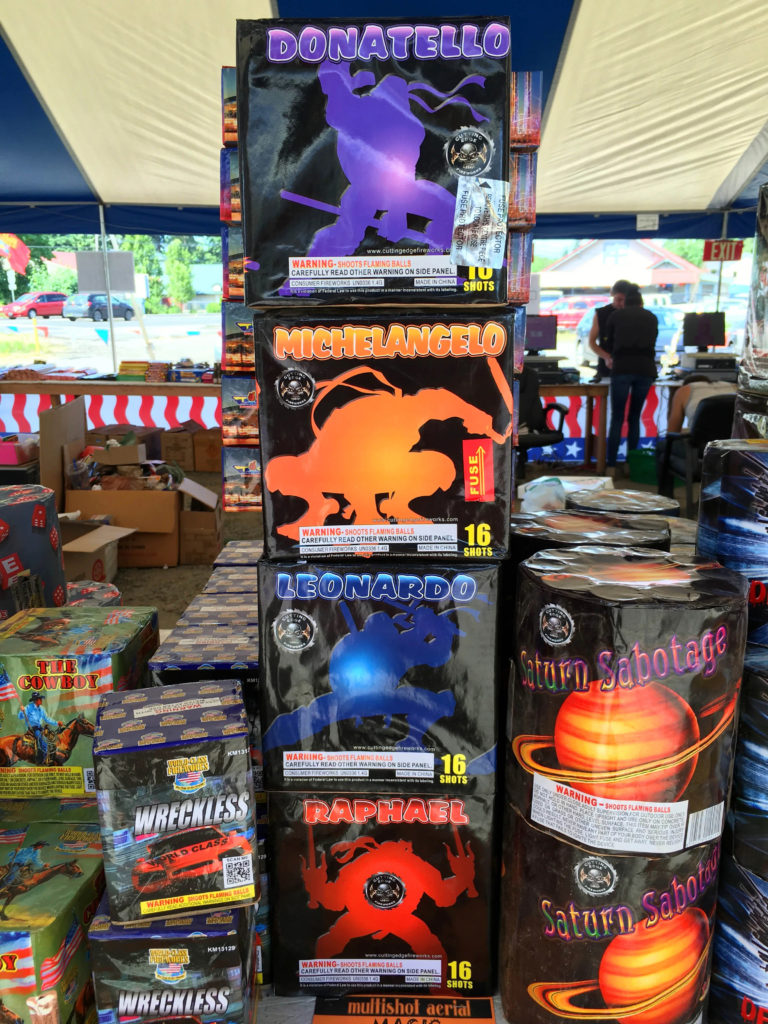

I’d like to point out this package in particular:

I presume all of the images in these fireworks packages are stolen by their creators from some place. Thing is, I know exactly where this image was stolen from! It’s the backglass of the Williams Junk Yard pinball machine! That face in the lower right, at the controls of the crane and partly hidden by the name, that’s Crazy Bob!
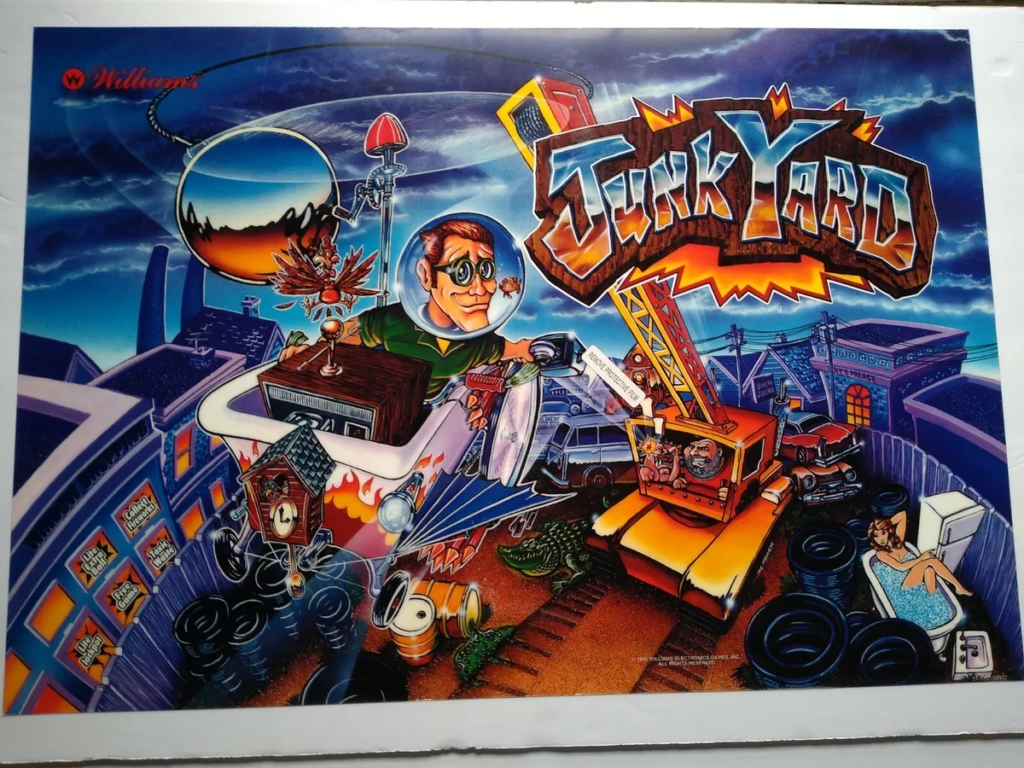
Maybe the Chinese artist assumed, in 2015, that Junk Yard was some super-popular United States property that would instantly fill their coffers with tasty lucre. We’ll never know.
Believe me when I say this just scratches the surface. The internet is not forever, so please, visit Cabel’s sites and enjoy them while you can!
alienmelon on Virtual Pets and Desktop Toys
alienmelon is Nathalie Lawhead, a desktop toy creator who’s made a lot of cool things, like the Electric Zine Maker and Cyberpet Graveyard. Back in 2021 she made this great roundup of her own desktop toy work, as well as that of others. It was a whole field of computer software, not really games, that faded into obscurity right around the time that social media, that bane of all good internet things, started becoming big. Desktop toys were often distributed on personal websites, and Facebook and Twitter tend to muscle out those kinds of places.

Some of the toys she’s made are the Electric Love Potatoes, virtual stray cats, fake virus checkers, love stories between the files on your computer, and RUNONCE, a virtual pet you can only play with a single time, after which it’s dead and gone, refusing to run again.
The article lists all of these, but with that it’s just getting started, linking to a plethora of old toys. One that comes to mind personally is the classic Neko desktop pet, a pixel-art kitty cat that would chase your cursor then fall asleep.
It’s a great introduction to/recollection of an old and vanished age of software. And it also contains the phrase, “In retrospect I don’t think it was cool of me to scare my mom with a potato.”
Make Tiny Weird Software, Please! (all about desktop pets, old computer eras, and virtual toys)
The Guardian Legend Shrine
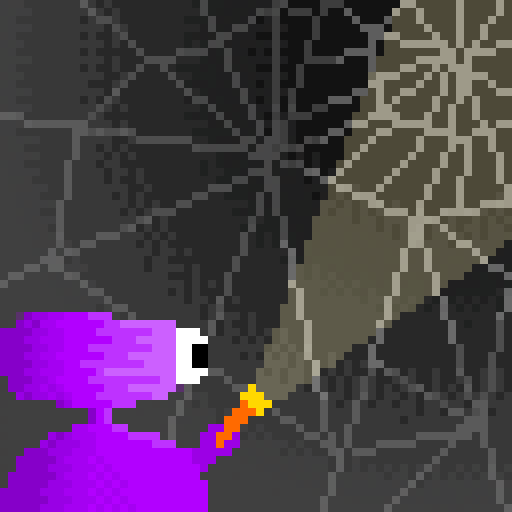
The World Wide Web is now over thirty years old. In that time, more content has vanished from it than remains now, but some of it can still be dredged up from the shadowy archives of the Wayback Machine. This is the latest chapter in our never-ending search to find the cool gaming stuff that time forgot….
Part of the network of the similarly venerable shmups.com, The Guardian Legend Shrine is nearly the ideal game shrine, a static site crammed full of screenshots, strategy tips, fan art and fiction, and generally just everything of interest to a fan of the NES game.

The Guardian Legend, recently covered by Jeremy Parish within Metroidvania Works as part of his penance for coining the term in the Before Times, is a cult classic in the genre. Design by “Moo” Niitani at Compile, it combines their deadly-sharp shooters with the exploratory gameplay of The Legend of Zelda. It even has its own form of the confusion as to who the main character is supposed to be. In this case, it’s pretty obvious in play that she’s a cyborg bikini girl out to blast aliens, but you wouldn’t know it at all from the manual or US box art. She’s just “The Guardian,” because otherwise it’d be more evident that you play as a girl.

Last updated in 2002, the heyday of the age of the internet fan shrine, its art section is full of crudely-drawn sent-in art of its main character Miya, or Alyssa, or whatever she’s called. Most of it is chaste, thankfully-this isn’t DeviantArt we’re talking sbout here. I wonder about the people who sent those drawings now, and how they feel about work they made probably as a kid still floating around the internet. The game was already nine years old at that time, so they really couldn’t have been that young?

It seems likely that no one’s worked on the site for a long long while. The hit counter and guestbook don’t work, and the link to an archive of NES manuals is broken. The newest entry on the News page says they had lost their FTP password, but then found it again, and a new update should be coming soon. That was in 2002, so you know, any day now.

The Downloads page has links to the game’s roms, shamelessly promulgated to all passers-by, as well as a lot of other media taken-from and inspired-by the game. As just one more example of just how old this is, the suggested emulator for playing the roms is Nesticle.
The original game is 34 years old now, and not getting younger. The age of the web fan shrine is long past, and its parent site Shmups hasn’t itself been updated since 2010. Who knows how much longer it’ll be with it. SO please, take a few moments to explore this relic of a past age. Do it for me. Do it for “Moo” Niitani. Do it for Miya/Alyssa/The Guardian/whatever. And especially, do it for Blue Rendar. Look into those googly eyes, how could you say no to them?

Sundry Sunday: Friends Don’t Let Friends Touch Strange Powerups
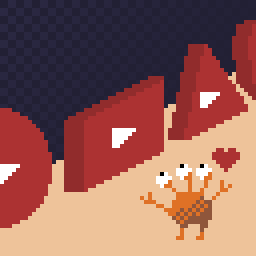
Sundry Sunday is our weekly feature of fun gaming culture finds and videos, from across the years and even decades.
Pringus McDingus again. Maybe a little explanation of this one would be to the benefit of those who aren’t so extremely online.

Super Mario Wonder is one of the games that was announced at the recent Nintendo Direct. The Elephant Berry is a powerup shown in that game. The green symbol in the berry’s eyes is the Deviantart logo. And what Daisy does in this animation is perfectly understandable and maybe even necessary.
Bad Game Hall of Game: Sword of Sodan
Bad Game Hall of Game is an interesting blog that talks about failed titles without the snark with which they were usually treated in the early days of the Web, or the rancor of The Angry Video Game Nerd. Snark and furor drive hits, of course, so I can respect the desire to give games many regard as kusoge their due, whatever that may be.

When you don’t? It’s unfair.
Truthfully, there are lots of games that are perceived as bad that aren’t really so terrible, often due to the audience-chasing bile emitted by folk like Seanbaby and Something Awful. Games intended to be played for challenge, especially those from arcades and the earlier years of consoles, are kind of a pastime for masochists. When you lose, it often feels like it’s not your fault, but was it really? Was that hit telegraphed and avoidable? Was there some clever technique to be discovered, like jumping and slicing through an Ironknuckle’s helmet in Zelda II, that makes seemingly impossible enemies a simple matter to defeat? And when a game is intended to be played many times, not shattered in a single session but returned to many times, getting a bit further each time, isn’t it supposed to be a good thing that you may lose your first time out?
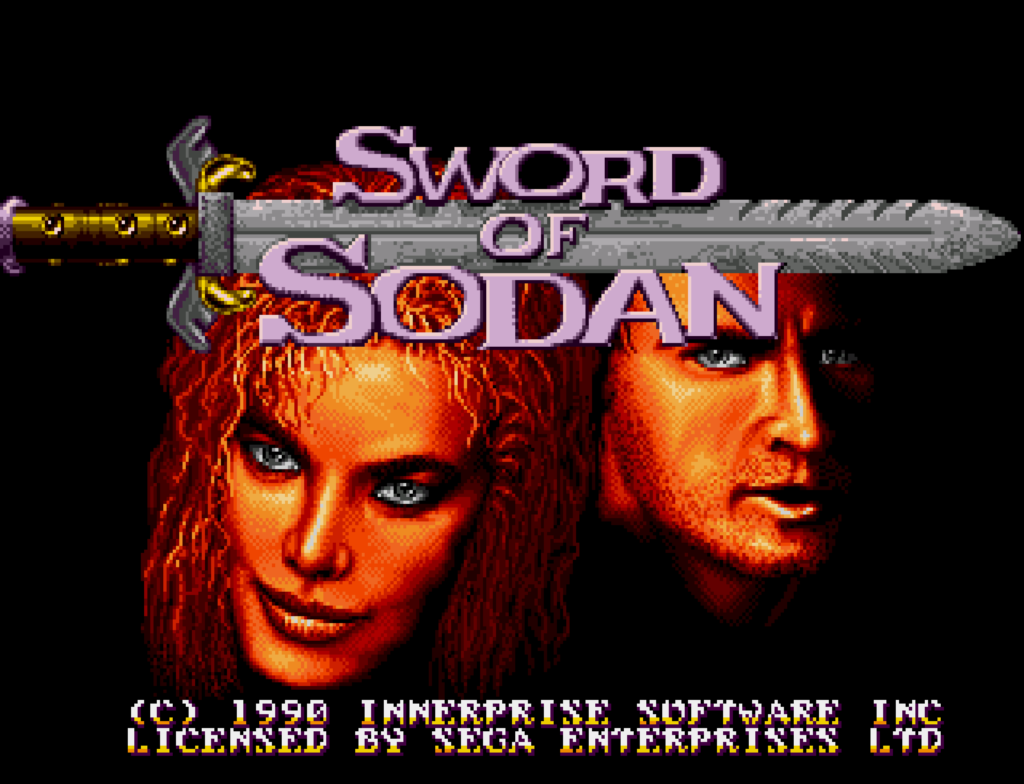
There are lots of armchair game designers, maybe even more than armchair movie directors, since players spend more time with games generally before they put them down, and it’s easier, theoretically at least, to make games yourself without the capital expenditure and outside labor that movies require. (I can tell you though, it’s still plenty hard.) And yet, they are the players, and if they’re not having fun, then the game is doing it wrong. Even if it’s because of some information or training the player hasn’t, in their life, gained, you can’t blame them. Maturity can help a player enjoy games they wouldn’t otherwise. But this is also true of any art form, and the opposite could also be said to be true, there are games where, I’d say, maturity is an outright barrier to enjoyment. It’s complicated. Maybe I’ll talk about this later.
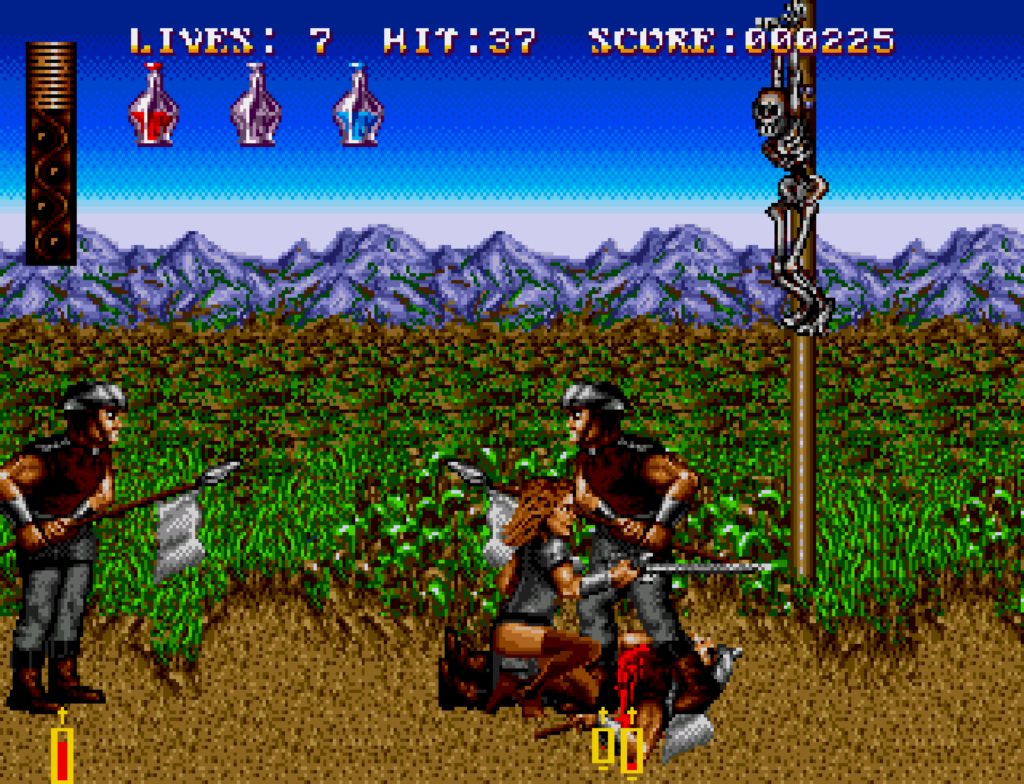
In the article that Bad Game Hall Of Fame talks about that I find interesting today, the game in question is Sword of Sodan, the creation of Finnish demo coder Søren Grønbech, an infamous game with a much longer story behind it than your typical bad game, indeed extremely long. Out of curosity, I pasted BGHoF’s discussion of it into Microsoft Word, and it came up to 67 pages! It’s got two large sets of footnotes, goes back to the Amiga demo scene and gives insight into the difficulties of developing computer games, at the time, in the state of Denmark.
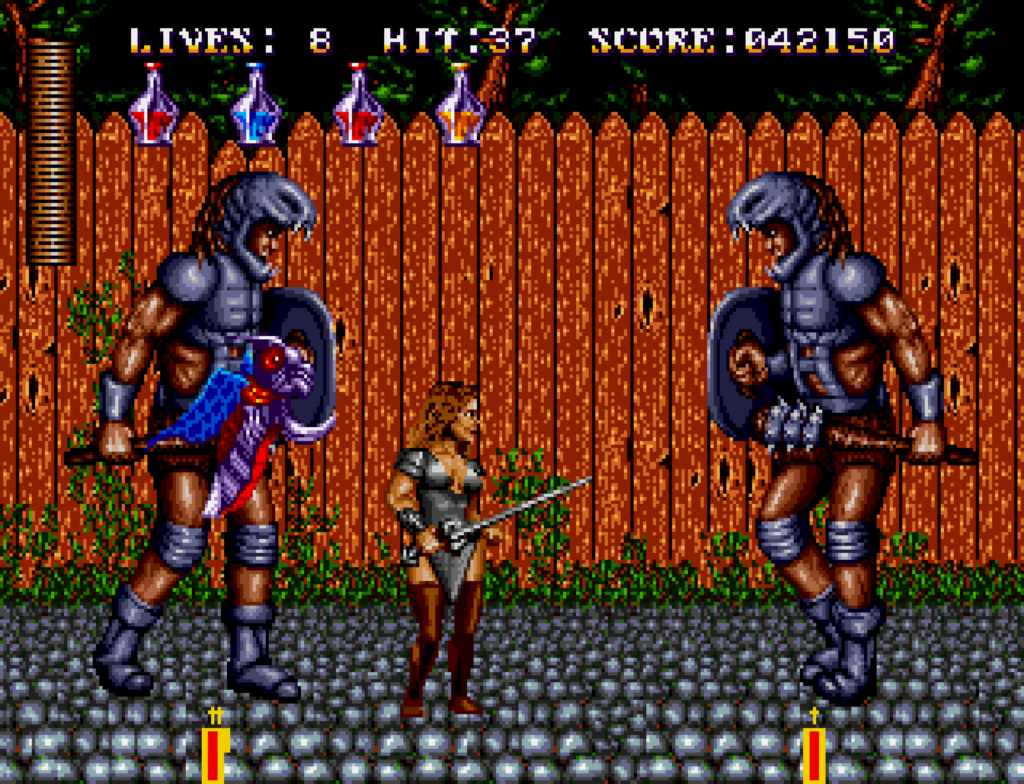
Sword of Sodan for the Sega Mega Drive/Genesis, as it turns out, is a port of an Amiga game. Both games are extremely hard, but the Genesis version actually has more interesting design decisions behind it, in the form of its potion mixing subgame. You can hold up to four potions, each of one of four different colors, and can choose to drink any number of them at once. Drinking different combinations of potions has different effects, most good, some useless, a couple actually bad. (Hilariously, if you drink one of each color at a time your character immediately dies, and the game flashes a message on screen: “WINNERS DON’T DO DRUGS.” Gee thanks, William S. Sessions.)
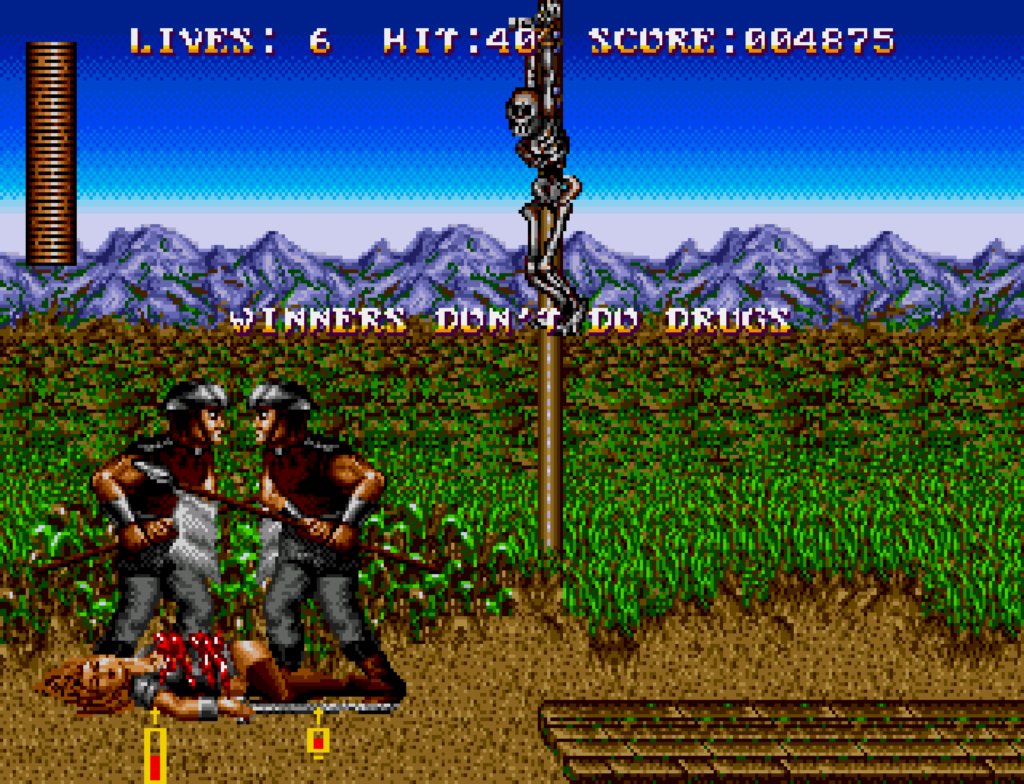
67 pages is a lot to read about a game that few people might want to play, but it’s okay to skip around. I won’t tell anyone.
Kaze Emanuar’s Adventures in Mario 64 Optimization: Calculating Sine
I’ve mentioned Kaze Emanuar’s efforts to make the best Mario 64 there can possibly be on its native hardware. He’s compiled it with optimization flags turned on, made its platforming engine much more efficient, and worked hard to minimize cache misses, which was a major source of slowdowns in the game’s code. Under his efforts, he’s gotten the engine running at 60fps (although not yet in a playable version of the original). While these optimizations are not the kind of thing that can keep being found indefinitely, he’s bound to run out of ways to tune up the code, currently he’s still finding new ways to speed it up.
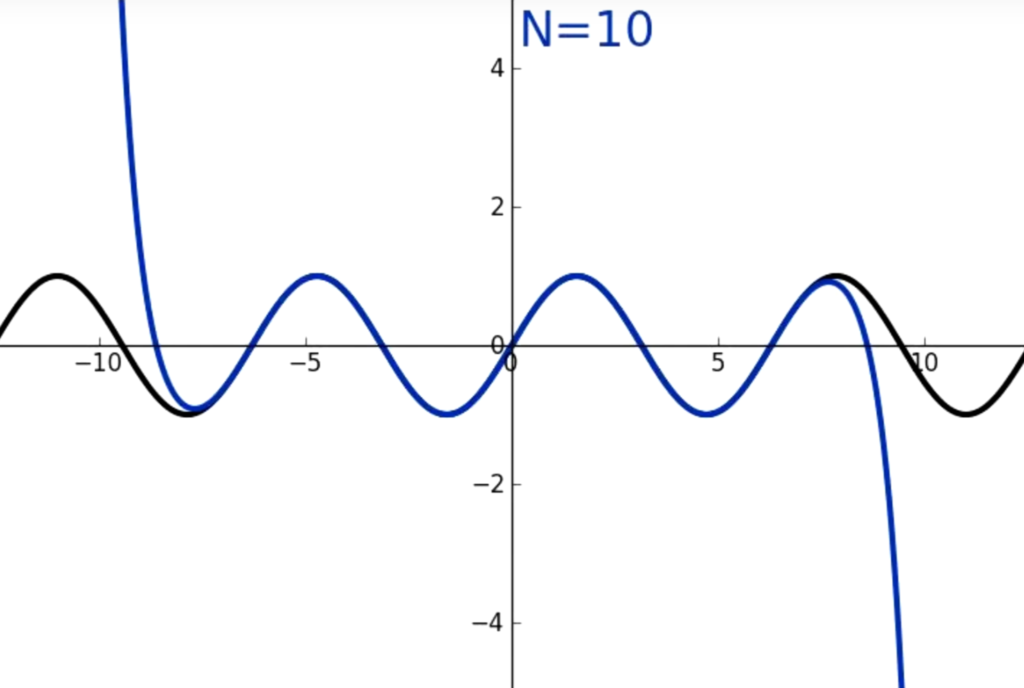
He made a Youtube video detailing his most recent optimization find: getting the game’s trigonometric functions executing at their speediest. What is interesting is that the Mario 64 code already uses a couple of tricks to get sine and cosine results in a rapid manner: the game only uses 4096 discrete angles of movement direction, and contains a lookup table that covers each of those angles. But it turns out that this optimization is actually a mis-optimization, because the RAM bus hits incurred to read the values into the cache are actually more expensive than just figuring out the values in code on the N64’s hardware!
The video starts out decently comprehensible, but eventually descends into the process of figuring out sine and cosine on the fly, and the virtues of the various ways this can be done, so you can’t be faulted for bailing before the end, possibly at the moment the dreaded words “Taylor series” are mentioned. But it’s a fairly interesting watch until then!
Satellablog: New Dumps!
Satellablog is a blog dedicated to preserving content from one of the least-documented portions of Nintendo video game history, that short period in their life where they distributed software via satellite broadcast, over the St. GIGA service.

(Images from Satellablog)
Most of this stuff only exists, maybe, in company archives deep in the halls of Nintendo, and the data from the last broadcasts saved on aging flash memory cartridges held by subscribers. It is believed that all of the dumps that have been made available have come from those cartridges, and Satellaview is dedicated to finding them and making them available.

There are a number of interesting finds in this batch, including lost Dezaemon shooters, a cut-down version of Super Famicom RTS Bounty Sword, a non-playable demo of Elfaria II. But the most surprising thing in the collection is a number of dumps of a Satellaview version of Nintendo’s website circa 1999, one of the last things they made available over Satellaview! I had no idea that the service survived that long!
Time Extension on a revival of Cosmic Smash
Have you ever heard of Cosmic Smash? I’d be shocked if you had. It’s the kind of thing that even I only know about from obsessive reading of obscure game blogs and Youtube videos. It was a Sega arcade game that got a release for the Dreamcast right at the moment the company was getting out of the console business. It had laughably bad timing, and it never made it out of Japan.
Yet, the game has gotten a cult following. You could deride it as merely a futuristic, three-dimensional take on racquetball and Breakout, but it’s one of those games where the style makes all the difference. Here’s some footage of the Dreamcast version:
Time Extension, one of those blogs that makes good posts so often that I’m tempted to tell you to read it instead, did an article talking with the creator of a spiritual remake called C-Smash VR, released for Playstation VR2 with a license from Sega and the blessing of the game’s original creators. It’s such an obscure game that I’d be surprised if it could be profitable, but we love rooting for underdogs here, even if I have a general antipathy for VR.
Cosmic Smash And C-Smash VRS – Reviving Sega’s Cult Classic (Time Extension)
@Play: The Angband Family Tree

‘@Play‘ is a frequently-appearing column which discusses the history, present, and future of the roguelike dungeon exploring genre.
It’s finally time. Time to reveal the maelstrom of roguelike games which has, as its center, the game of Angband.
You might be interested in our other recent columns on Angband: Re-introduction, Getting Started, and Version History.
Here is a chart of the 100-plus variants of Angband (homepage) that we know of. RogueBasin and the variants table at Tangaria were both major sources for this. You might have to right-click it and download to view it without blurring. Here’s a direct download of the PNG.
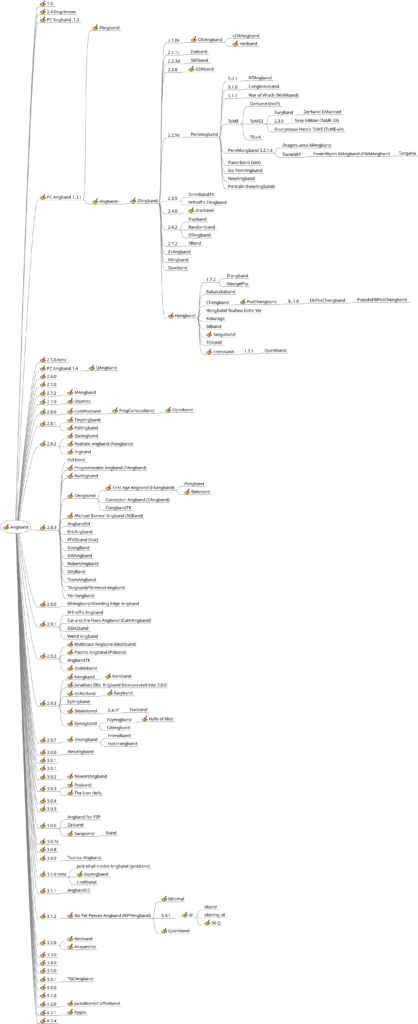
The degree to which these games have been changed from the original varies tremendously, from slightly hacks to repurposings to entire other games. In ToME, Angband was used as a base that would be completely rewritten, twice, and turned into something completely separate. Many of these games could have whole articles written about them. I’ve written at least one so far, on Zangband.
Looking through the chart, one can find two great jumping-off points from Angband’s source tree. One is PC Angband 1.3.1, largely because of being the original base of Zangband, and the other is Angband 2.8.3, which was the site of legendary maintainer Ben Harrison’s great cleanup of the code, which made it much easier to create variants than it had been.
Looking at the list, one might get the impression that this list also serves as a timeline, but that would be in error. Some variants would be updated over time, bringing in features from later in Angband’s development, and this chart doesn’t reflect that, and sometimes a game wouldn’t branch off from the newest version of the code. Please keep this in mind when looking through it.
A few interesting finds from the list:
Steamband is a complete reskinning in a kind of Jules Verne pulp steampunk style. It is what we might call a literary game, taking direct inspiration from a particular corpus of stories in the same way as Call of Cthulhu or Gygax era Dungeons & Dragons. In it, you start in a town in the center of the Earth, and try to ascend to the surface. It has some interesting ideas around the theme, but I cannot recommend it wholeheartedly because of its “race” system, which is easy to perceive as actually racist. I think its intent was to present the racial attitudes of the fiction works from which it was derived, which were really terrible, but it comes across, not to mince words, as gross these days.
There are two My Little Pony variants, based off of the “G4” version of the franchise that became meme popular for about 45 minutes of web time. Ponyband, a.k.a. My Little Angband: Dungeons Are Magic, derives from the popular 2.8.3 branch; Anquestria got its basis from the later 3.2.0.
ToME, a fairly popular variant, has the distinction of not only having a living homepage, but is also available on Steam and GoG. It has a free version, but other features are available to paying players. It’s a game that’s changed a great deal over time, starting out as Tales of Middle Earth. Now, little of its Tolkien basis remains, and its name has been retconned into “Tales of Maj’Eyal,” because you gotta have an apostrophe. Its page vaguely gives it an air of being an MMORPG, but I think it’s still a strictly single-player game. It is a game that, judging from comments, there is a great deal to get stuck into, but to my eyes it has a lost the simplicity of its origin, and it’s not an easy game to pick up. It is still under development though, and that is beyond laudatory for a game of its age and lineage.
Ironband is a challenge variant, intended to make the original game even harder. An “ironman” mode, preventing the player from going upstairs, forcing them to descend ever deeper, is part of the base game now. Ironband dates back to 2012, which may be before this mode was added, although I cannot date its inclusion conclusively right now. But whether is or not, by devoting itself to this mode of play, it is free to be completely redesigned around it. So, Ironband has streamlines the game in its service, removing races and classes, and giving the player all of their options at once. After the start of the game, there are no shops at all; everything the player gains after that point must come from the dungeon floor. Because all characters can use all things, there’s much fewer completely useless items. The “stat gain floor” phenomenon, where you have to grind on certain floors to get necessary potions to improve your attributes or risk almost certain death, has also been alleviated. Because dungeon progress is one way, it refreshes the skill points that your abilities require upon entering a new level, which is an interesting play decision: if you run out of SP, you can get them back by advancing a floor, but at the cost of increasing the game’s difficulty, possibly earlier than you’d want.
The Bolo Home Page, Revived
Bolo is a multiplayer tank game, originally for the BBC Micro but remade for classic Macintosh computers. It was a very popular online kind of game for awhile.
It had a popular resource page on the internet, called the Bolo Home Page, made by Joseph Lo and and Chris Hwang, that began as a student project and migrated to the site lgm.com. But then that site went down, and its domain was bought by squatters. So it goes.

Well, vga256 on Mastodon has remade the Bolo Home Page out of the records kept by the Internet Archive. A site composed of hundreds of static HTML pages has risen from the ashes, all (well most) links fixed up to point internally, its content restored as much as is possible. The Internet Archive, for all its greatness, frequently misses images and even whole pages, so there are holes in its record.
Still, most of its content remains. For people who wish to learn about this classic piece of electronic entertainment, a collection of hundreds of pages awaits you!
I’ve never played Bolo myself, I don’t know much about it, but some people it seems were very enthusiastic about it. I don’t think gameplay goes obsolete, it just falls into and out of fashion. Maybe this is a sign. Maybe it’s time for the Second Age of Bolo to begin.

